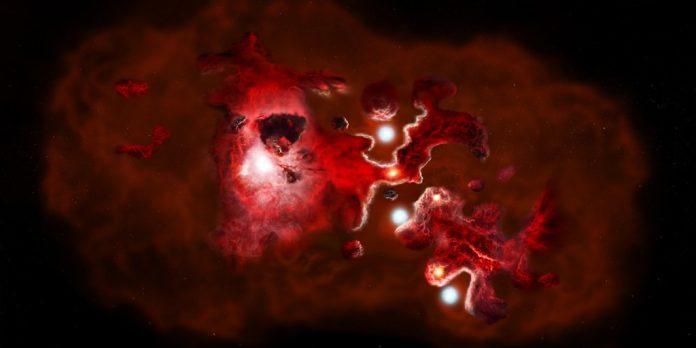
Astronomers are now getting an unprecedented look at what galaxies looked like when the Universe was still in its infancy.
Thanks to a new study using the powerful Atacama Large Millimeter/submillimeter Array (ALMA) in Chile, researchers have captured stunning details of galaxies that formed just one billion years after the Big Bang.
This period marks a crucial time in cosmic history, when the first galaxies were taking shape from clouds of gas and dust.
The project, known as the CRISTAL survey, involved a detailed study of star-forming galaxies in the early Universe.
Unlike previous observations that could only detect blurry blobs of light, ALMA’s high sensitivity and resolution allowed scientists to peer through thick cosmic dust and observe the internal structures of these ancient galaxies.
Rodrigo Ignacio Herrera Camus from Chile’s Universidad de Concepción, one of the lead researchers, explained that the team could now see what was going on inside these galaxies—not just their shapes, but how gas was moving and where stars were forming.
The study found that some galaxies were already developing disk-like structures with smooth rotation, much like our Milky Way, while others appeared messy and chaotic, likely the result of galactic collisions and mergers.
One fascinating discovery was the detection of vast clouds of gas extending far beyond the main star-forming regions. These clouds, visible through a specific light signal from ionized carbon, may serve as fuel for future star formation or be remnants from energetic outflows caused by intense star activity.
Another surprising feature was the clumpy nature of star formation. Rather than forming evenly, stars in these galaxies seemed to burst into life in scattered patches. This gives astronomers new clues about how stars came into being in the early cosmos.
Among the most intriguing galaxies observed was CRISTAL-10, which displayed an unusual lack of carbon emission compared to its brightness in the far-infrared spectrum. This odd behavior is similar to that of Arp 220, a famously bright and dust-shrouded galaxy closer to home. Studying CRISTAL-10 may offer insights into the mysterious energy sources and conditions in the early Universe.
With this new “family portrait” of early galaxies, ALMA is changing what scientists know about how galaxies form and evolve. These findings are already challenging existing theories and opening up exciting new questions about our cosmic origins.
Source: ALMA.



